Point/Counterpoint Justin Fox Burks
Justin Fox Burks
The best things in life are all about juxtaposition. Chocolate is sweet yet slightly salty. Roller coasters are scary but safe. Contrast is interesting; it’s exciting. Think fusion restaurants, tanlines, baked Alaska, point/counterpoints …
I admit, taken alone, summer days aren’t anymore interesting or enjoyable than a day trapped in a sauna. But combined with a few simple pleasures, summer days can be the best time of the year.
The same ice cream that is okay in the winter and good in the spring tastes heavenly at the height of summer. A waffle cone stuffed with a double scoop of Rocky Road is a good way to cool your core temperature from the inside out (and part of the fun is savoring every single bite before it can melt into a soupy mess).
During other times of the year, frozen juice on a stick is uninspiring. Add a summer day, a truck with a bell, and an aging hippie, and that same popsicle has the pull of the Pied Piper.
Summer days don’t just make food better. That polluted pond you wouldn’t touch during April or May? Try to stay out of it in July.
When sweat is dripping down your nose and your skin is reddening like a tomato on the vine, nothing is more refreshing than a cannonball into a cool body of water. Summer days lure you into swimming in a lake, wading in a river, floating in a pool, or jumping waves in an ocean.
You might feel self-conscious in your bathing suit or you might not like the feel of sand squishing in between your toes, but once you’re in the water, you won’t regret it.

Summer days give people an excuse to indulge. Maybe it’s the shared cultural memory of summer freedom; maybe it’s just too hot to do anything except what makes you cooler, but summer days mean doing what feels good.
Looking for a way to beat the heat? Take in a mindless summer blockbuster. Not only do you get to sit on your butt for two hours while your favorite action heroes save the world from aliens or hunt for buried treasure — talk about contrast — movie theaters seem to crank up the air conditioning 11 months out of the year.
The degree change is palpable as you walk toward the ticket booth. Once inside, you breathe a sigh of relief. It’s nice and cool and dark.
And just about the time you start getting chill bumps and begin cursing your shorts, the movie ends. You walk back outside. The temperature that was once muggy and oppressive feels warm and cozy. (Your sunglasses have fogged up, but that’s another story.)
Water-gun fights, sprinklers, washing the car, blowing soap bubbles … none of these things are any good without summer days.
They might be hot, but they’re all about staying cool.
Summer days in Memphis have their charms — if you like sweat, car seats that burn your thighs, and the back of your neck gettin’ dirt and gritty.
I don’t like those things. So there’s little doubt in my mind that summer in this city is much better in the nighttime.
Sure, I could list the obvious Memphis nightlife charms — a cold beer on Beale, listening to James Govan bring the Stax sound back to life at Rum Boogie; downtown rooftop parties; relaxing on Tsunami’s tiny patio, watching the Cooper-Young hipsters walk by — but Memphis’ true summer charms are often more subtle, more hidden away.
By day, your friend’s pool is a simple refuge from the summer broil. You get hot; you jump in. Rinse, repeat, ad nauseum — and watch out for that 6-year-old with the giant water pistol. At night, that same pool becomes an urban oasis — dark, secluded, and just perfect for coping with heat and humidity that feel like you’re wrapped in a steamy Turkish towel.
You sip your icy drink. You chat with your friends. Occasionally, you slide into the inky pool and let the cool water embrace you. Perhaps you sit on a step; perhaps you swim a leisurely lap; perhaps you even take your cocktail with you. You’re not hot anymore. You’re cool. Real cool.
Nighttime in Memphis has other charms. Walking the streets of Midtown in the evening, the aroma of fragrant jasmine flowers lingers along every garden wall. Fellow strollers greet you with a smile on their non-perspiring faces. Porches are filled with conversation. You can see inside the warmly lit homes and check out people’s artwork. (Why do you think voyeurs work at night?)
And there is enough light left in a Memphis summer day to play nine holes after work without risking heatstroke. A golf course, any golf course, looks better in evening light. Your score will be better, too, if there’s no sweat dripping on the ball as you putt.
Or you can head to your favorite fishing hole (and I have many) at 7 p.m. and fish under the moon ’til midnight. You can sit on the bank and listen to the bullfrogs and whip-poor-wills sing if the fish aren’t biting. (Mosquito repellent is a must.)
You can go to a Redbirds game and savor the smells and sounds of America’s pastime under the lights. You can sit on the cool grass in deep left field, even if the game goes extra innings. I defy you to sit in a bleacher seat on an August afternoon for more than 20 minutes. Baseball, like almost everything else in Memphis, is simply better at night.
In closing, I must quote the great philosopher Olivia Newton-John, who screeched these immortal words (along with John Travolta) in Grease: “Oh, those summer ni-i-i-i-i-i-ights.”
Sorry, for putting that in your head, but all’s fair in point/counterpoint debates.
New reads on rock. 
If summer sounds good, make it sound better with some good reading on rock. To start, start big: The Mammoth Book of Sex, Drugs & Rock ‘N‘ Roll (Carroll & Graf), an anthology of rock reporting edited by Jim Driver and drawn from the pages of magazines such as Cream, Melody Maker, New Musical Express, Rolling Stone, and Time Out. You know the territory. The topics come with the territory: “Bands, Booze & Broads,” according to the title of one piece here; “Wine, Women and Song” according to another; and “Blurred Vision,” according to a third. Congratulations, though, to two prize entries with two winning headlines: “Fifty Tabs a Day Turned This Man into a Tree (nearly),” on acid-guitar virtuoso Frank Marino, and “All I Want for Christmas Is My Two Front Teeth,” on foul-mouthed Pogues frontman Shane MacGowan, who stands by his mates and his fans: “Our audiences drink a lot and I feel we owe it to them to stay drunk.” Roight!
It was 40 years ago today when the act you’ve known for all these years, the Beatles, released Sgt. Pepper‘s Lonely Hearts Club Band, and to mark the occasion, British music writer Clinton Heylin has produced The Act You‘ve Known for All These Years: A Year in the Life of Sgt. Pepper and Friends (Canongate), a detailed report on the creation of and reaction to the Fab Four’s history-making album. Pair it with Kenneth Womack’s Long and Winding Roads: The Evolving Artistry of the Beatles (Continuum), then turn Stateside to see Inside the Music of Brian Wilson: The Songs, Sounds, and Influences of the Beach Boys‘ Founding Genius (Continuum) by musicologist Philip Lambert. “Inside the music” is right, because Lambert gets down — right down to the key changes, chord progressions, and lyrical variations in Wilson’s work. You think that most summery of songs, “Surfer Girl,” is a simple tune? Wrong. You think “Good Vibrations” is complicated as hell? Right.
Right or wrong, you love hip-hop. You hate hip-hop. So do writers and editors Kenji Jasper and Ytasha Womack in Beats Rhymes & Life: What We Love and Hate About Hip-Hop (Harlem Moon/Broadway Books), a collection of essays and interviews with the likes of Nelly, Ludacris, Scarface, Ice-T, and Mos Def. Fan or no fan, it’s enough to make the blood boil: early hip-hop, as argued here, was a reflection of political and social realities, a means of honest expression, versus contemporary hip-hop: a cash cow for corporate profits. Conclusion: It’s the American way.

It’s not the way of the Fleshtones in Sweat: The Story of the Fleshtones, America‘s Garage Band (Continuum), by Joe Bonomo, who chronicles, as the publisher’s press release terms it, “the soul sucking pressure of the status quo” (new-wave division). In the case of the Fleshtones, that translates into 30 years of uninterrupted touring, of one time sharing practice space with the Cramps, of one time sharing stages with James Brown and Chuck Berry, and of sticking it out after the East Village scene that spawned the group went the way of all flesh: big bucks.
No telling who first penned the music and lyrics to “The House of the Rising Sun,” but it sure wasn’t the Animals, who made it famous in the mid-’60s, or Woody Guthrie, Pete Seeger, Lead Belly, or Bob Dylan, who covered it. Maybe you can trace the song to Georgia Turner? Alan Lomax did. In 1937, he recorded the 16-year-old in Kentucky singing it. Maybe you can trace it to Homer Callahan? Ted Anthony does in Chasing the Rising Sun: The Journey of an American Song (Simon & Schuster), and to hear Anthony tell it, Callahan learned of the ruin of many a poor boy during corn-shucking season in the Appalachians. That’s a far cry from today, when the ruin of this song is sealed: as a cell-phone ring tone, as a popular item in Chinese karaoke bars, and as the soundtrack for Gatorade ads.
But for the record: The summer belongs to Strummer, in the most anticipated rock book of the season, Redemption Song: The Ballad of Joe Strummer (Farrar Straus and Giroux) by Chris Salewicz. See the Flyer‘s upcoming literary supplement for a review. In the meantime and for a break from books, cue it and crank it: Verbena’s “Hot Blood.”
Class Acts
It may only happen about three times in your life: that ooey-gooey feeling of being temporarily ill-defined. A new 
retiree might feel it, or a college graduate not yet entered into a career. It also describes the thousands of Class of 2007 students across the Mid-South.
“It feels weird,” says Lindsey Johnson, two-and-a-half weeks out of White Station High School, where she had been voted “Most School Spirited.” “I feel a lot older. It kind of hasn’t hit me yet.
“A friend of mine said the other day, ‘When we go to school in the fall,’ and the thought that popped in my head was, high school, like I’d be back at White Station. But I’m not even going to be in the city.” Johnson is off to the University of Tennessee at Knoxville.
Ashley Brooks is also just a few weeks out of high school — Harding Academy. She’s headed to Middle Tennessee State University next. “It’s awesome,” Brooks says about being out, “because I know I don’t have to go back and deal with all the high school stuff. But at the same time, it’s kind of scary knowing that I’m going to go into the real world.
“I feel like I’ve been [in high school] forever, and so I’m finally going, you know, away from the parents. I get to meet new people. It’s kind of overwhelming, though, thinking about it. Time’s ticking down: This summer’s going by a lot faster than I thought it would.”
What are high school graduates doing this summer? Johnson is working to save up for college (and maybe a sorority), and Brooks is in the job market too, but mostly they’re both logging hours with their friends.
Johnson says, “We hang out at people’s houses, go out to dinner. Sometimes we’ll all go see a movie or something. We have a little hot-wing place [Ching’s] on Getwell that we go to.”
 Photo Courtesy of Lindsey Johnson
Photo Courtesy of Lindsey Johnson
Catherine Taylor and BFF Lindsey Johnson
Brooks’ best friend is going to Baylor, “13 hours away,” as she describes it, painfully. “We’re trying to hang out as much as possible this summer. … But I told her, ‘You cannot get a new best friend. It’s not going to work.'”
“I’m definitely ready for a new city,” Johnson says on her decision to go to school away from home. “Oh yeah, gotta get out of this one.” She laughs. Why does she say that? “Willie Herenton! [laughs again] And I just want to get away from my parents too. I want to do something on my own.”
Brooks herself is looking for a change of scenery. Her graduating class numbered 80. “It was [hard to be myself]. People knew you way too much. They always know everything about you, and it’s really annoying, like you can’t keep secrets because there’s a big rumor mill.” But for Brooks, here’s the kicker: “I loved high school. During the years I was like, Oh my gosh, I can’t wait to graduate. But looking back, that was the best time of my life. I loved it.”
What’s taking place this summer is a coming-of-age rite that’s been occurring annually since time immemorial — at least since the 1950s. But it’s a brand-new experience for the class of ’07.
“One of my really good friends got a full scholarship to Furman, and he’s already left,” Johnson says. “We’ve had a class together every year since the 7th grade, and it’s really weird. I don’t want to not go to school with him, and I feel that way about a lot of other people too. It’s just strange.”
Brooks says, “It’s going to be hard, I already know. … One class I’m taking, there’s 175 people in my class, that’s going to be so weird for me coming from, you know, a class of 12 to a class of that size.”
Not that the Class of ’07 doesn’t have some advantages older generations didn’t. Johnson and Brooks agree: Geography-negating Facebook and text messaging looks to be a predominant form of communication with old friends.
And the future? If this experience has taught them anything, it’s that things do come to an end and that times do change. In a way, the future is already past. Brooks says, “College to me is one of those things that, once you do it and you’re done with it, you look back and are like, wow, I accomplished something huge.”
A Summer Concert Preview Photo Courtesy of Lindsey Johnson
Photo Courtesy of Lindsey Johnson
Lindsey Johnson and Catherine Taylor
The Biggies
The last time the White Stripes performed in the Memphis area was September 10, 2001, at Earnestine & Hazel’s on South Main. If it seems odd now that one of the world’s biggest rock bands played a tiny downtown bar not generally known for its live music only a few years ago, well it was odd at the time too. The blues-fueled indie-rock duo of Jack and Meg White hadn’t quite crossed over at the time, but they were awful close. Even then, it was as odd a combination of band and venue as one could remember.
Nearly six years later, the duo’s return to the Mid-South highlights a diverse, active summer concert season. The White Stripes recorded their 2001 breakout album, White Blood Cells, in 
Memphis, at Easley-McCain Recording, and Jack White has been back many times mixing various projects (the White Stripes’ Get Behind Me Satan, his side band the Raconteurs’ Broken Boy Soldiers, and the White-produced Loretta Lynn album Van Lear Rose). But, in support of their new album Icky Thump, the band will give its first post-stardom Mid-South performance on July 31st, at the newly refurbished Snowden Grove Amphitheatre in Southaven.
The White Stripes aren’t the only high-profile act in town this summer that’s managed to blend art and commerce. Hometown boy Justin Timberlake will give his first Memphis concert since August 2006 when he plays FedExForum August 6th. Last year, Timberlake played the New Daisy in a sneak-preview showcase of music from his then-forthcoming album Future Sex/Love Sounds. A year later, Timberlake returns riding a stadium show in support of what has become the biggest pop album of the past year. Punk-poppers Good Charlotte open.
If Timberlake has a rival as the biggest pop/R&B performer in the land, then its Beyoncé, who has dominated the airwaves for much of the past year with ecstatic hits such as “Check On It,” “Ring the Alarm,” and “Irreplaceable.” Beyoncé hits FedExForum July 7th.
And the controversial Crunk Fest concert moves up to FedExForum for its 5th anniversary show July 21st. At press time, the lineup was scheduled to include New Orleans rapper Lil’ Wayne, St. Louis’ Jibbs, and locals Yo Gotti and Eightball & MJG, among others.
Legends
Four of the true living giants of American music will make area appearances in July and August. Though he lives in Memphis, soul legend Al Green rarely performs here. That changes July 21st, when Green is scheduled to play the Live at the Garden series at the Memphis Botanic Garden. Now 61, Green has retained one of the greatest voices in any realm of pop music, as witnessed by recent recorded-in-Memphis comeback albums I Can’t Stop and Everything’s O.K. This summer, Memphis fans will get to hear it live in concert.
A week after Green — almost certainly our greatest living male soul singer — performs, the greatest living female country singer sets down in Tunica, as Loretta Lynn plays the Grand Casino July 28th.
In August, the hard-touring Willie Nelson returns to the area to play the Mud Island Amphitheatre — his first concert within the city since pairing with Bob Dylan at AutoZone Park a few years ago. Finally, while former Beale Street blues boy B.B. King makes annual appearances at his namesake club downtown, he’ll play a bigger venue this summer when he performs at the Horseshoe Casino August 25th.
Country & Roots
Country and roots-music fans of all stripes have plenty to look forward to this summer. Mainstream country fans can catch heartthrob Keith Urban and folk-pop openers the Wreckers at FedExForum June 29th, as well as towering CMT fave Trace Adkins — with opener Tracy Lawrence — at the Snowden Grove Amphitheatre July 6th. Those who like their Nashville cats to sound a bit more traditional can catch Marty Stuart at the Bartlett Performing Arts Center August 16th.
Alt-country and roots-rock fans can get an early start on the summer this week as a couple of ace ex-Memphian singer-songwriters — Todd Snider and Cory Branan — team up June 21st at the Gibson Music Showcase. But the biggest local show in this corner of the musical world will likely occur July 12th, when alt-country cult-fave Ryan Adams plays the Germantown Performing Arts Centre. Finally, the originally queen of rockabilly, Wanda Jackson, makes an always-welcome local appearance August 12th at the Hi-Tone Café.
Best of the Rest
One of the more interesting local concerts this summer could be the one that pairs much-loved underground songwriter Daniel Johnston with local treasure Harlan T. Bobo at the Hi-Tone Café August 8th.
Expect many a thirtysomething Memphian to take a rockin’ trip down memory lane at the Snowden Grove Amphitheatre July 11th when two of the very best of the ’80s pop-metal bands — Poison and Ratt — kick out the jams. And modern-rock fans can decide if they like their guitar-rock on the mild side (The Fray at Mud Island, July 7th) or at maximum volume (Queens of the Stone Age at the New Daisy, August 7th).
Summer sex toys keep you cool when things get hot.
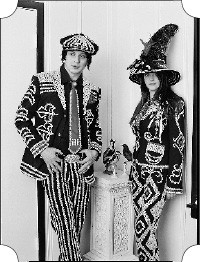
The White Stripes
“Oh when I look back now/ That summer seemed to last forever/ And if I had the choice/ Ya — I’d always wanna be there/ Those were the best days of my life/ Back in the summer of ’69” — “Summer of ’69”
When Bryan Adams penned those nostalgic lines back in 1980-something, it’s doubtful he was thinking about the naughty implication of the song’s title. These days, who can even say the number “69” without a little adolescent giggle?

Besides, the sexual act of “69” seems way more entertaining than Adams’ lame-ass summer memories. And here at the Flyer, we’re hopeful that some of our readers plan on trying that position and many others as the mercury rises this season. But sex can get hot (and we don’t mean “sexy hot”). We’ve compiled a list of sexual aids to keep couples cool when things get heated:
Glass dildos and butt plugs — Made from the same freezer-safe, heat-resistant material used in Pyrex cookware, these colorful handblown glass pieces can be stored in the freezer for safekeeping. And just like the cookware, these toys can go straight from freezer to “oven” (if you catch our drift).
Now, we know what you’re thinking: Is it really a good idea to put glass in your most sensitive area? Drew (who asked that we not reveal his last name) at Christal’s on Germantown Parkway says these toys are nearly impossible to break with normal use. Just don’t throw yours against a wall.
Glass dildos come in all colors, shapes, and sizes. The largest at Christal’s is a whopping five-pound, 11-inch, studded variety about three inches in diameter. Use with caution.
Good Head Oral Gel — This gel is designed to make the sometimes-unpleasant task of providing a BJ a little more, um, tasty. Fortunately, it comes in Mystical Mint, which makes for a slightly cooling sensation on the receiving end and a fresh-breath effect on the giving side. You won’t even need to brush afterward.
Eros Ejaculator by Lady Calston — Think water-gun-turned-vibrator. This phallic toy can be filled with water and then used like a normal vibrator. When the “squirt” button is pushed, a stream of water bursts out. It’s supposed to mimic ejaculation, but we think it’d be more fun to use the feature to attack friends at an outdoor summer party. Water-squirting dildoes trump the Super Soaker.
Impulse Waterproof Vibrator — Kay Mills, regional manager of Fantasy Warehouse, recommends this waterproof dildo. It works like the famed Rabbit Vibrator, with its bunny-shaped clitoral tickler and rotating shaft filled with stimulating beads. The main difference: This toy has a dolphin-shaped clitoris massager, so it’s perfect for summer evenings on the beach. Just make sure no one else is watching.
Flex-a-Pleasure Anal Edition — This butt plug is waterproof, making it perfect for that, er, romantic evening by the pool. Some plugs look like they could easily slip inside and get lost (an embarrassing trip to the ER, to say the least), but this one has a five-inch wand. At the end of the wand is an adjustable speed dial to control vibration.
Penis Water Bottles — Available at Christal’s, these plastic phalluses hold about 24 ounces of ice-cold liquid and come complete with a catheter-like straw protruding from the tip. Perfect for summer hiking trips, the gym, or even the office (just don’t blame us when you get fired).
Hot Hooters Warming Booby Oil — Now, this product doesn’t exactly promise a cooling effect. In fact, it’s just the opposite. Fortunately, this colorful warming liquid comes in tropical flavors so tasty they’ll whisk couples away to an island paradise. Available in Piña Colada and Strawberry Daiquiri, the oils give new meaning to “sex on the beach.”
If toys aren’t your thing, there are other ways to turn up the steam without turning up the heat.
“Try playing in the sprinklers after dark with the lights out in the backyard or maybe a sexy car wash,” says Drew at Christal’s. Mills at Fantasy Warehouse suggests making flavored ice using Kool-Aid and then taking a few cubes into the bedroom.
Regardless of how you choose to stay cool, don’t let the summer sun prevent you from getting any action. After all, you won’t be attractive forever, and your working parts may not work so well in the years to come.
In the immortal words of Bryan Adams: “We were young and restless/ We needed to unwind/ I guess nothin’ can last forever — forever, no …”
Back here at home and there’s nothing to do?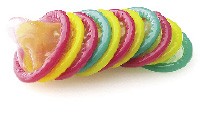 dreamstime.com
dreamstime.com
“Vacation, all you ever wanted,” but you’re stuck at home and there’s nothing to do? Stop complaining. There are mini-vacation spots all around Memphis, and they’re cheap to boot.
Start at the fountain on the Main Street Mall — the one with jets of water shooting out of the bricks in front of the trolley stop. Wear clothes, wear a swimsuit, or whatever (just don’t violate public decency laws). Run through the fountains! Stand in them! Act like you’re 11 again! How long you spend on this activity is entirely up to you.
Once you’re done, towel down a bit and walk over to the Madison Hotel. On the roof, you’ll find one of the best views of Memphis, with Mud Island to the west. Plus, they’ve got a bar up there.

Now go get something to eat. Hop on the trolley and head down to South Main. Grab a burger at Earnestine & Hazel’s, or perhaps a veggie plate from the Arcade, or a piece of quiche or cheesecake at the Cheesecake Store. After that, get something to drink at Bluff City Coffee and walk around South Main with your beverage.
As long as you’re in the area, stop by the National Ornamental Metal Museum and check out all the statues on the grounds. My favorite is the fountain, because it has a human head coming out the top. Plus, the Indian burial mounds are right out front. If you go past an abandoned hotel and turn right on Cotton Gin Road, there’s an RV park and a clean, isolated neighborhood straight out of the ’60s.
Not far from the Metal Museum, you can see the “old bridge” in the distance (Memphis-Arkansas Memorial Bridge for outsiders). There’s a walkway on that bridge. Which brings us to another time-honored summer activity: feeling like you’re defying death. The bridge sways in the wind, it shakes from the weight of traveling cars, and giant trucks pass so closely you’re almost knocked over.
If that isn’t your style, you can go watch other people beat the snot out of each other. Every Sunday afternoon in Audubon Park, Society for Creative Anachronism members dress up like knights and hit each other with fake swords. It’s fun to cook up some popcorn, plant your ass on the ground in front of the action, and yell, “Have at ye, knave!” My recommendation: dress up like a dragon and charge them. I guarantee that half of them will love it and half of them will be deeply offended.
There are other things to do in this neighborhood. Admission to the Memphis Botanic Garden is free on Tuesdays, and the Dixon Gallery & Gardens is free on Saturday mornings. At 4 a.m., nearby Gibson’s Donuts on Mendenhall starts turning out the day’s delicious treats. For shopping, there’s a cluster of great thrift stores in the Highland/Summer area.
If you want to continue down Summer, be sure to stop at Games Plus, one of the few places left in the city where you can get video games made before 2000. Classic. Then head east to catch a movie at the Summer Drive-In or maybe play mini-golf at Putt-Putt Golf and Games.
The city has so much more to offer. There are the cheap beers at the P&H Café, stumbling down Jackson Avenue to get to Alex’s for post-3 a.m. Greek wings and shuffleboard, walking the abandoned railroad tracks in the southeast corner of Shelby Farms, bar-hopping on Overton Square, getting delicious Ethiopian food at Abyssina on Poplar, and so many other things that don’t involve Graceland, Stax, or Sun Studios (treasures of Memphis, though they be). Get up and go-go. Anyone who says there’s nothing to do in Memphis isn’t looking.
A local program is getting teens worked up.  Justin Fox Burks
Justin Fox Burks
Main Street Mall; National Ornamental Metal Museum; Memphis-Arkansas Memorial Bridge
“Well, I’m a-gonna raise a fuss, I’m a-gonna raise a holler, about a-workin’ all summer just to try to earn a dollar …”
Eddie Cochran’s dismal account of summer for the working American teenager includes a merciless boss, long hours, and a slender wallet. But for a number of area youth, there is a cure for the “summertime blues.”
The Memphis Summer Youth Employment Program (MSYEP) aims not only to provide participants with summer job opportunities but also to aid in character development.
According to Thurman Northcross, manager of youth services at the Office of Youth Services and Community Affairs, “Many summer youth employment programs around the country focus on crime abatement, but we choose to look at our program as promoting youth development.” Northcross has been involved with the program since November 2006.
To participate in MSYEP’s lottery — the program’s selection process — youth must be 14 to 21 years of age. Fourteen- and 15-year-olds who land spots in the program earn $5.15 per hour for a 20-hour workweek; 16- to 21-year-olds work 30 hours a week for $6 per hour.
This year, out of about 7,000 applications, the program had enough funding for 1,150.
Over the eight-week course, the teens work in a wide range of city-funded positions, including several not-so-typical jobs. “We have 20 kids researching the history of the downtown area,” Northcross says. “We have 16 other kids working on neighborhood mapping with GPS [Global Positioning System] equipment.”
As part of MSYEP, many of the participants also take classes that teach them skills they can use when they join the workforce. For instance, there are classes specializing in air conditioning, electrical, auto mechanics, welding, and graphic arts/advertising. Fifteen to 18 students are in each class. 
Northcross says, “If businesses could agree to host and fully fund classes at the worksites, they would help develop a pool of kids working harder next summer. The classes connect the youth to aspects of the businesses.”
No matter what jobs the participants land, they learn the fundamentals of working in the real world, such as responsibility. “Even when they show up for orientation, we make sure they’re orderly and well-dressed,” Northcross says. “You have to have a zero-tolerance policy. Once you implement that message, they follow it. We’re trying to get kids to understand that this experience mirrors the real world of work.”
Northcross feels that regardless of their reasons for working, this year’s participants will find themselves more capable of success at the end of the eight weeks. All they needed was a little help. “They need some type of support to open doors for them. We owe it to the youth and the city to do that,” he says. His ultimate goal, though out of reach at present, is a zero-percent summer unemployment rate for city youth.
“Some kids don’t realize the potential they have,” Northcross says, and MSYEP aims to open their eyes. “Every kid who wants to work should have the opportunity. We need to give them all we can so they can be all they can be in life.”

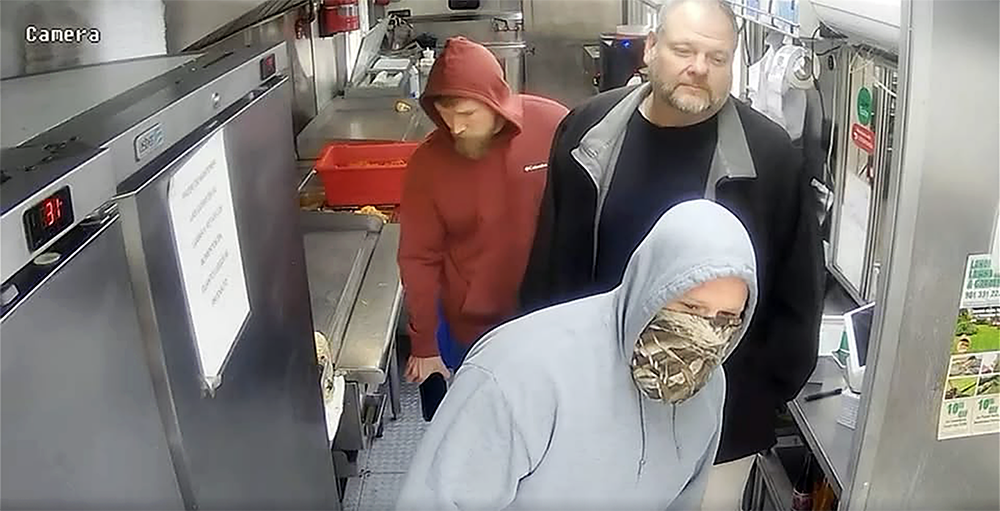
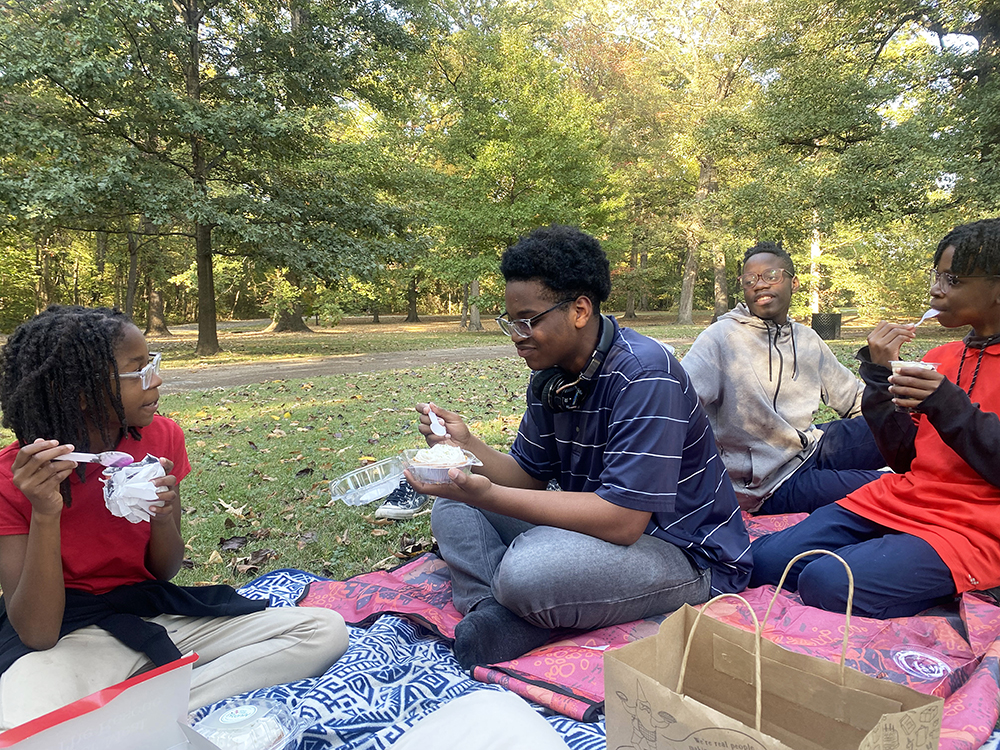

 Laura Faith Kebede / Chalkbeat
Laura Faith Kebede / Chalkbeat 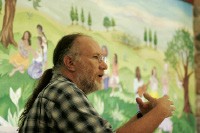 Justin Fox Burks
Justin Fox Burks  Justin Fox Burks
Justin Fox Burks  Justin Fox Burks
Justin Fox Burks  Justin Fox Burks
Justin Fox Burks  Justin Fox Burks
Justin Fox Burks  Justin Fox Burks
Justin Fox Burks 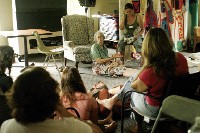 Justin Fox Burks
Justin Fox Burks 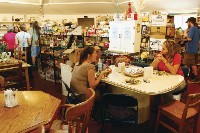 Justin Fox Burks
Justin Fox Burks 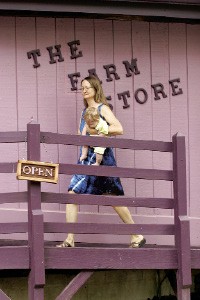 Justin Fox Burks
Justin Fox Burks 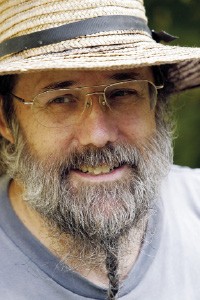 Justin Fox Burks
Justin Fox Burks  Justin Fox Burks
Justin Fox Burks 




 Photo Courtesy of Lindsey Johnson
Photo Courtesy of Lindsey Johnson  Photo Courtesy of Lindsey Johnson
Photo Courtesy of Lindsey Johnson 


 dreamstime.com
dreamstime.com 
 Justin Fox Burks
Justin Fox Burks 